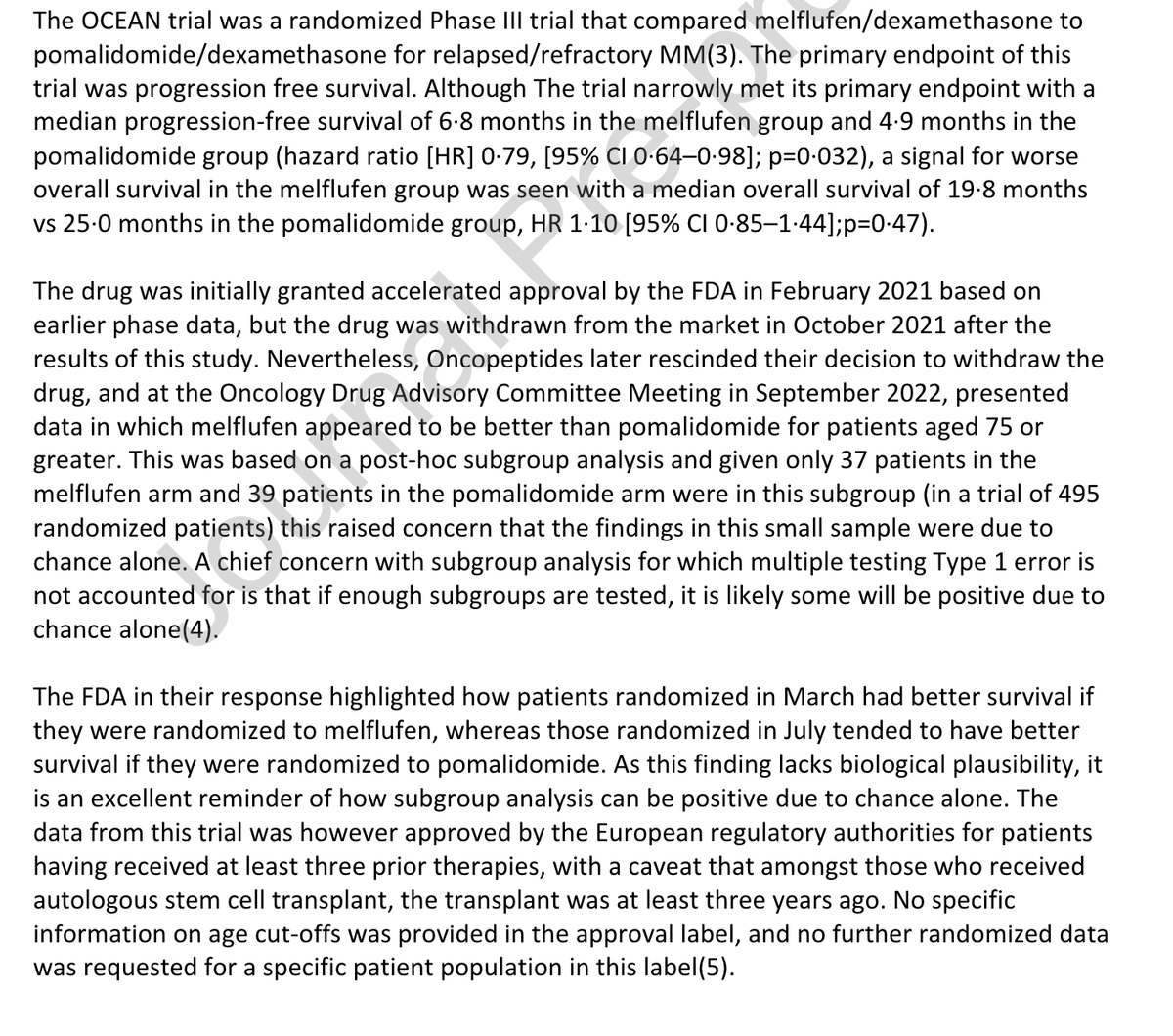
My approach to transplant for myeloma (some nuance lost):
Young stnrd-risk who prioritizes PFS: Upfront auto
Young stnrd-risk who doesn't prioritize PFS: Defer
Young high-risk: Upfront auto
Older high-risk: Transplant only if mel200 can be given
Older standard risk: No auto
#mmsm
Young stnrd-risk who prioritizes PFS: Upfront auto
Young stnrd-risk who doesn't prioritize PFS: Defer
Young high-risk: Upfront auto
Older high-risk: Transplant only if mel200 can be given
Older standard risk: No auto
#mmsm
3 trials and supporting evidence in brief thread:
1)DETERMINATION: PFS benefit, but no OS at 7-8 years of follow-up, despite low cross-over in control arm
nejm.org/doi/full/10.10…
1)DETERMINATION: PFS benefit, but no OS at 7-8 years of follow-up, despite low cross-over in control arm
nejm.org/doi/full/10.10…
2)IFM-2009: PFS benefit, but no OS benefit at 7-8 years, although high-cross over to transplant in control arm
nejm.org/doi/full/10.10…
nejm.org/doi/full/10.10…
3) DSM XIII
Mel 140 could not beat continuous len/dex in an older patient population.
ash.confex.com/ash/2022/webpr…
Mel 140 could not beat continuous len/dex in an older patient population.
ash.confex.com/ash/2022/webpr…
And although high-risk is under-represented in all these trials, a key meta-analysis done by my friend @rajshekharucms shows improved outcomes with transplant for high-risk, hence increased emphasis placed on transplant for high-risk.
pubmed.ncbi.nlm.nih.gov/35377484/
pubmed.ncbi.nlm.nih.gov/35377484/
KEY POINT:
Patients should be referred to a transplant center for discussion of all of this- and collection of stem cells to allow for a deferred approach
(especially those who are young and for whom a decision is made to defer rather than completely forego transplant).
Patients should be referred to a transplant center for discussion of all of this- and collection of stem cells to allow for a deferred approach
(especially those who are young and for whom a decision is made to defer rather than completely forego transplant).
Lastly, renal failure not contraindication to auto-transplant, but Mel should be dose reduced in such situations.
Also, how to handle and de-escalate quads (if you choose to give them) is unknown if you choose a non-transplant approach!
END
Also, how to handle and de-escalate quads (if you choose to give them) is unknown if you choose a non-transplant approach!
END
I must also say- this is for US audience
In lower resource settings, transplant remains one of the most cost effective ways to have a longer remission.
Also, many patients prefer transplant to many more additional months of weekly infusions- a very nuanced discussion necessary.
In lower resource settings, transplant remains one of the most cost effective ways to have a longer remission.
Also, many patients prefer transplant to many more additional months of weekly infusions- a very nuanced discussion necessary.
• • •
Missing some Tweet in this thread? You can try to
force a refresh











